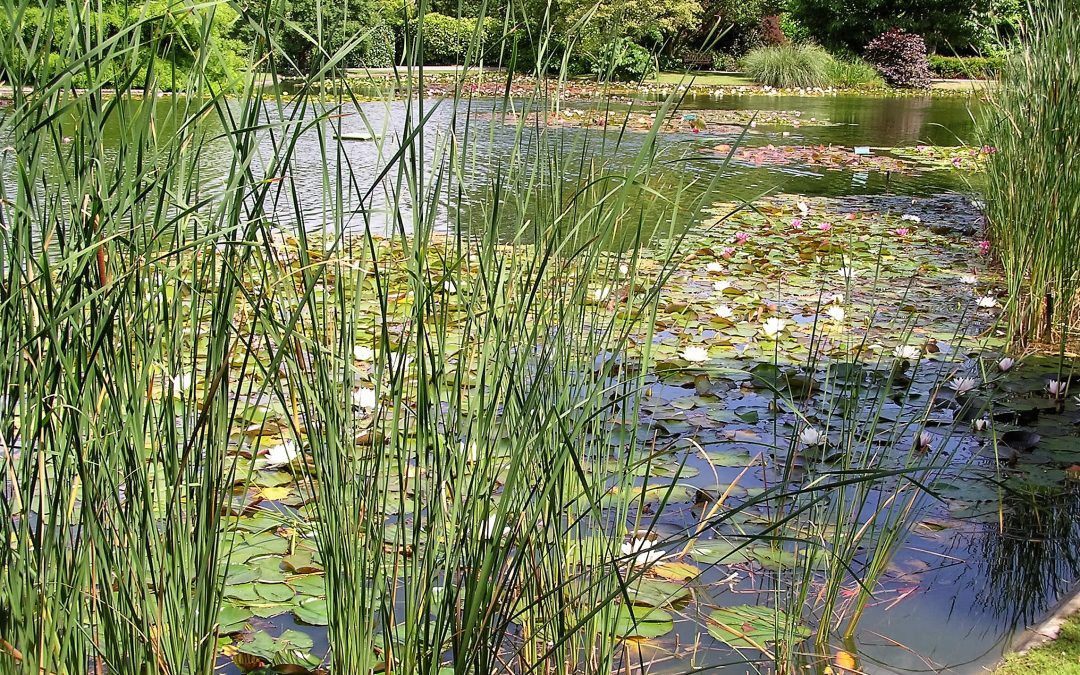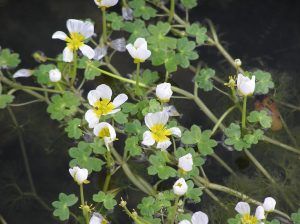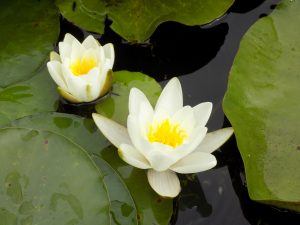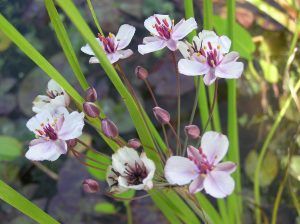When planting up a pond, there is more than just colour or appearance to consider. We offer a range of pond plants all sizes of ponds and they fall into roughly three different categories:
Each category of plants grows best in slightly different conditions. To get the most out of your plants and your pond you need to consider your planting plan carefully. Whatever plants you choose, we believe that a balance of all the categories is essential for the wellbeing of the pond’s mini ecosystem. Especially the fauna who live in this watery environment.
How many bunches of oxygenating plants will I need?
Here at Pond plants HQ we recommend you plant 3 bunches of oxygenating plants for every m². For example if your pond is a 2m by 4m rectangle it will be roughly 8m² in area. So you will need 24 bunches of oxygenating plants. If your pond is a circle 3m in diameter it will be roughly 7m² – you will need 21 bunches of oxygenating plants.
There are many different varieties of oxygenating plants and it is a good idea to plant more than one variety to provide maximum diversity in you pond.
Deep water plants
Deep water plants, like water lilies, grow best with their roots at the bottom of the pond. They have long stems and should be planted into containers that are totally immersed in water. They need 25 to 75cms of water over the top of the soil. It is a myth, however, that water lilies can grow well in very deep water. Even the most vigorous will struggle in water that is more than 1m deep.
Almost all pond plants do best when planted in full sunlight, where the water warms up quickly. It is here that you will see the best display of flowers. Unfortunately blanket weed also thrives in these conditions (see Getting rid of silkweed/blanket weed from your pond). It’s important to grow enough deep water plants to cover at least a third and up to half of the surface of the pond with leaf by late June/early July. Luckily, the best plants for this purpose are water lilies.
Selecting the right size and number of water lilies
Different water lilies grow to different sizes, so always select a water lily suitable for your size of pond;
- Large lilies e.g. Attraction – one lily for every 2m² of water surface area
- Medium lilies e.g. Moorei – one lily for every 1.5m² of water surface area
- Small lilies e.g. Froebelli – one lily for every 1m² of water surface area.
- Miniature or pygmy lilies e.g. Pygmy Helvola – need only 1/2 m² of water surface area i.e. one lily for a tub or mini pond (ponds with less than 1m² of water surface area).
When mature, the pads (leaves) of a large water lily will cover an area of about 1m across. A medium lily will cover an area of around 750cm across. A small lily will cover about 50cm across and a pigmy lily around 25cm across. This is a rough guide as the area covered will depend on the age of the plant and the growing conditions.
Depending on what sort of effect your wish to achieve with your planting, you can mix different sizes of water lilies in the same pond. You may want to plant three medium water lilies rather than one large water lily, or you may want to plant a small water lily close to the side with medium or large water lilies further from the edge. The choice is yours, but be prepared to fall in love with these spectacular flowering beauties, for one is never enough! (see Waterlilies stole our hearts)
Marginal plants
Marginal plants are happiest when the soil in which they root is immersed below the surface of the water while their foliage and flowers create a pleasing display at the boarders of your pond, pool or lake.
These pond plants are usually grown on a shelf or at the margin (outer rim) of the pond. When building a pond, we would always advise creating a shelf all the way around the edge of the pond, about 30cm below the surface of the water. Plants can then be grown in suitable mesh planting crates. This allows you to more easily manage and move your plants, while also keeping the upper growth of the plant above water level. We recommend placing one marginal plant for every 45cm of shelf space.
Perfect planting cover
Marginal plants are great at disguising the edge of the pond while covering a significant proportion of the water surface. In this way, not only do they compete for nutrients with algae but provide shade and protection for pond life. They also create interest around the border of your pond.
There is a large range of marginal plants available, many colours, shapes and sizes. Which ones you plant will depend upon the overall effect you want from your planting.
Whichever plants you end up choosing, we recommend always planting into crates, especially in fabricated or lined ponds. This will help you to contain vigrorous native varieties, preventing them from crowding out more delicate neighbors.




